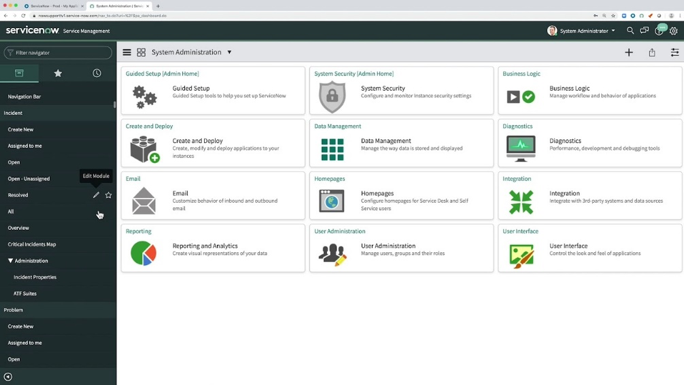Moving full speed ahead into 2021, a year that is slated to be marked by unpredictability, fast-paced change, and (still) a lot of disruption – no organization can afford to allow such disorder to impact productivity, operations, and the business overall.
Moreover, in our world where systems and services need to be ‘always on’ and where business-impacting incidents happen all the time, it is all the more critical to have the best tools on hand for reigning in those incidents when they do happen and ensuring continuity.
In this article we present of the top 10 incident management tools for 2021, so you can evaluate, compare, and decide on which solutions are best suited for your organization’s needs.
But first, what is incident management?
Incident Management is the process by which IT operations and DevOps teams manage unplanned interruptions to operations or a reduction in the quality of IT services that are provided both to internal and external stakeholders (e.g. employees and customers, respectively).
And the main goal of incident management is to ensure that interruptions are remedied and that IT services are restored to their operational state as quickly as possible.
The implications of sub-optimal incident management
When incidents are not resolved quickly, and services are not restored as soon as possible – the implications can be dire.
It has even been noted that:
- The median loss for major incidents is at $47 million
- 25% of major incidents come in at losses that exceed $100 million
- Less that optimal incident response costs ~2.8x more
And it’s not just the financial loss. During incident induced downtime, there is no access to the digital systems that have been affected.
This means that employees can’t access day-to-day operational software, sales can’t access customer and prospect data, customer care can’t access the relevant support systems, and, most notably, customers can't use the software or digital properties that are the company offering.
The promise of incident management solutions
To help mitigate the risk, organizations often turn to incident management software solutions.
And there are multiple software solutions out there that serve as key enablers for optimizing incident management. Among the benefits they offer are:
- More efficient decisions about who gets alerted about incidents and when
- Making sure that the right people are notified for each specific incident type
- Making sure that alerts are not missed by the requisite incident stakeholders
- Management of on-call responders
- Ensuring that the process is articulated clearly to all stakeholders
- Assigning incidents to more expert teams when needed
- Adjusting incident prioritization
- Streamlining root cause analysis for process optimization
- More efficient communications with incident stakeholders
The value of incident management solutions is so great that it’s no surprise that market is projected to grow at a rate of 17.9% from $16.04 billion in 2019 to $60.60 billion by 2027.
However, this value can only be materialized if you know how to track incident management efficiency in your organization with the KPIs below:
- Amount of repeat incidents
- Average response time
- Average resolution time
- Rate of tickets breached
- Rate of first-time fixes
Choosing the right incident management solution
When evaluating the different options, it is important to consider the following:
- Openness and accessibility
- Broad offering of integrations
- Flexible and customizable workflows
- Enables self-service
- Includes a configuration management database (CMDB) for a faster resolution
- Available on multiple channels and accessible on multiple devices
- Offers a virtual situation room
- Enables communication with both internal and external stakeholders
- Includes a chronological timeline for real-time review of incident status
- Contains a knowledgebase for ongoing learning and optimization
The top 10 incident management solutions
1. AlertOps

This solution is noted as being a good option for large organizations that need to mobilize multiple teams with complex processes.
It is available in a SaaS model and comes with several integrations.
A downside of AlertOps is that it is known for being complex to configure and navigate, where creating new integrations can be time consuming and may require expert skill set.
The offering starts at $5/user/month and has the option for a free 14-day trial for the standard plan.
2. Exigence

Yes. This is us but we actually do deserve to be on this list, if we do say so ourselves. Exigence offers a SaaS platform for automating major incident management and orchestration. It enables incident responders to improve incident resolution capabilities and processes, empowering them with complete command and control and oversight of major incidents.
The platform comes integrated with the full scope of incident management tools including ticketing and helpdesk systems, conference rooms and phone bridge, chat and communications systems, monitoring systems, authentication and user management, and paging and escalation management.
Notable customers include Thales, McGraw Hill, Blackline, Veeva Crossix, Datascan, and more.
Pricing is available upon request.
3. Atlassian OpsGenie

Atlassian OpsGenie offers end-to-end incident management software for development and IT operations.
Like most other incident management solution, it integrates with most of the dev stack.
Among the cons noted by users is that the user management feature can be confusing, as can be the UI of several modules, including scheduling and the iPhone app version.
Atlassian Opsgenie starts at $9/user/month with a freemium subscription option for up to 5 users.
4. VictorOps

VictorOps, acquired by Splunk in 2018, offers a a unified platform for centralizing the flow of information throughout an IT incident’s lifecycle, providing real-time alerting, collaboration, and documentation.
It is designed for on-call engineers and offers mobile-readiness, post-incident reviewing, and code ownership.
The solution ingests and aggregates incident alerts and integrates with monitoring systems.
The downsides of the solution are noted to be the UI and the API which is missing key features.
VictorOps starts at $10/user/month, with an essentials package at $34/user/month, and a full stack option at $59/user/month.
5. Planbrothers

Planbrothers enables users to report incidents and observations on the go with any device. It also enables them to customize reporting categories, assign roles and responsibilities, add images and other attachments, and analyze the risks and trends in the organization.
The solution is well noted for being relatively easy to integrate, set up, and modify. Though it has also been noted that offering no testing environment makes development more complex.
Pricing starts at $300/month, based on the number of users.
6. BigPanda

BigPanda offers an autonomous operations platform for capturing alerts, changes, and topology data from different tools. It uses machine learning to detect issues and identify the root cause.
The solution is noted for excelling at grouping alerts from different monitoring systems into a single database and for filtering multiple entries from the same incident.
Among the cons noted by users is usability, as it requires a lot of coding, and cost.
BigPanda starts at $144,000/year for up to 2,000 nodes and offers a free demo.
7. Rundeck

Rundeck offers open-source, automated runbooks for incident management. It connects stakeholders from across the organization with self-service operations capabilities.
Rundeck is offered as a service with a web console, command line tools, and a WebAPI that lets you run automation tasks across a set of nodes.
User criticism of Rundeck includes the lack of single authentication and sign-on for authentication as well as a sub-optimal dashboard.
Rundeck starts at $20,000/year and offers a free demo.
8. OnPage

OnPage is a HIPPA focused alerting system that aims to help organizations ensure that IT and healthcare teams don’t miss urgent alerts.
It sends persistent mobile alerts and enables on-call escalations for reducing mean time to repair (MTTR) and for delivering maximum patient satisfaction.
While it is well ranked in usability, it has also been noted by users to be buggy and to offer a less than optimally friendly interface.
OnPage starts at $13.99/user/month and offers a free 7-day trial.
9. ServiceNow

The ServiceNow ITSM (IT service management) offering enables users to consolidate IT tools into a single data model as well as to automate workflows, gain real-time visibility, and improve IT productivity.
The solution is positioned as a digital transformation accelerator and as an enabler for elevating the user experience through machine learning and AI powered chatbots.
Solution downsides noted by users include the many steps required for completing some processes and a less than friendly user interface.
ServiceNow starts at $10,000 per year and offers a free version as well as a free trial.
10. Solarwinds Service Desk

Solarwinds have lately been in the news for their large scale data breach. That being said, SolarWinds still does a pretty good job at automating the consolidation, management, and prioritizing of incoming tickets.
SolarWinds aims to enable organizations to reduce the cost per ticket and issue resolution time with smart ticket routing, automated workflows, and integrated asset management.
It is noted for having a robust employee service portal and at the same time criticized for its data latency, lack of intuitive configuration interfaces between nodes in the map editor, and no option for device backup and live monitoring of changes in device configurations.
Solarwinds starts at $2,995 including the first year of maintenance and offers a downloadable, free 30-day evaluation.
In summary, as we have seen – the need for optimal incident management is great. And, indeed, there are viable solutions on the market today that can help DevOps and IT organizations accelerate incident resolution.
However, it is important to note that accelerating an effective incident resolution requires more than just selecting the most popular solution/s.
Clearly, planning and testing are also critical.
And, to really raise the bar, incident responders and leaders must also be able to:
- Alert stakeholders automatically when an incident is opened by an internal system
- Automatically launch concall bridge and chat room and manage both from one place
- Streamline complex procedures into automated incident management workflow
- Automatically notify all stakeholders when an incident is closed
- Enable users to create incident reports and root cause analysis with one click through a single and unified dashboard
- Enable the tracking and executing incident workflows through a single pane of glass
To learn more about how Exigence can help your team increase the speed and efficacy of incident management and resolution, we invite you to reach out to us at info@exigence.io.







